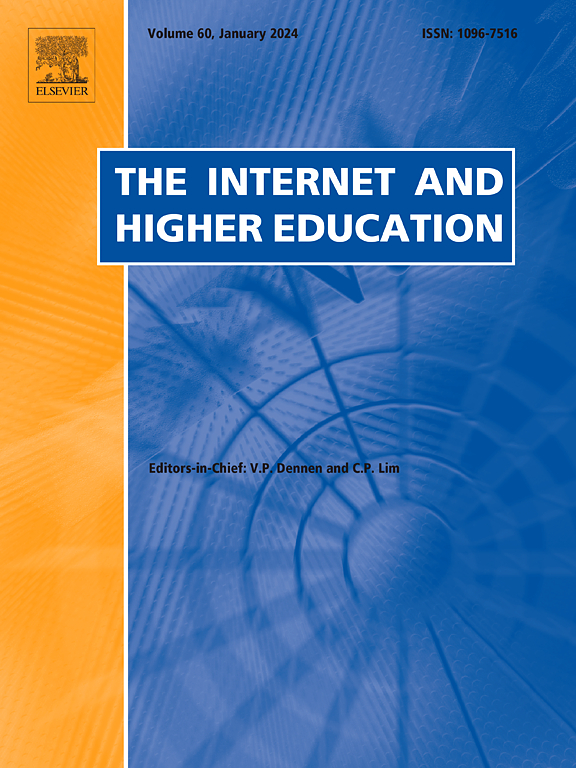通过教学视频中的类人行为和动态视觉线索最大化人工智能生成教师的有效性:来自眼动追踪研究的证据
IF 6.8
1区 教育学
Q1 EDUCATION & EDUCATIONAL RESEARCH
引用次数: 0
摘要
人工智能生成内容(AIGC)的快速发展彻底改变了mooc教学视频和讲座的制作,开启了将其用于教育的新篇章。这项技术可以从文本、图像或真人剪辑中生成会说话的讲师。然而,这些生成的教师提供的行为保真度和视觉线索对教学视频中学习结果的影响尚不清楚。本研究通过采用2x2受试者内设计(行为保真度:高/低;视觉线索:有/没有)36名大学生参与者。我们评估了学习表现、社会存在、满意度、认知负荷、人性和动机,并分析了眼球运动。结果表明,高行为保真度增加了社会存在感,更有效地吸引学生,从而导致更好的迁移绩效。研究发现,视觉线索有助于信息的组织和整合。生成的指导员在模仿人类行为并使用动态视觉线索时最有效。然而,这些教练的声音和手势还需要进一步完善。研究结果将与动画教师和真人教师相关的社会代理理论扩展到人工智能生成教师的背景下。我们建议在教学视频中使用具有高行为保真度的讲师,具有逼真的节拍手势,身体动作,面部表情和眼神交流。我们的研究为在教育环境中使用AIGC的含义提供了有价值的见解。本文章由计算机程序翻译,如有差异,请以英文原文为准。
Maximizing effectiveness of AI-generated instructors through human-like behavior and dynamic visual cues in instructional videos: Evidence from an eye-tracking study
The rapid advancement of Artificial Intelligence Generated Content (AIGC) has revolutionized the production of instructional videos and lectures in MOOCs, opening a new chapter in their use for education. This technology enables the generation of talking instructors from text and images or clips of real people. However, the impact of behavioral fidelity and visual cues provided by these generated instructors on learning outcomes in instructional videos remains unknown. This study addresses this gap by employing a 2 × 2 within-subjects design (behavioral fidelity: high/low; visual cues: with/without) with 36 college student participants. We assessed learning performance, social presence, satisfaction, cognitive load, humanness, and motivation, and analyzed eye movements. Results revealed that high behavioral fidelity increased social presence and more effectively engages students, leading to better transfer performance. Visual cues were found to facilitate the organization and integration of information. The generated instructors were most effective when resembling human behavior and using dynamic visual cues. However, further refinement is needed for the voice and gestures of these instructors. The findings extend the social agency theory related to animated and human instructors to the context of AI-generated instructors. We recommend using instructors with high behavioral fidelity in instructional videos, featuring realistic beat gestures, body movements, facial expressions, and eye contact. Our study offers valuable insights into the implications of using AIGC in educational settings.
求助全文
通过发布文献求助,成功后即可免费获取论文全文。
去求助
来源期刊

Internet and Higher Education
EDUCATION & EDUCATIONAL RESEARCH-
CiteScore
19.30
自引率
4.70%
发文量
30
审稿时长
40 days
期刊介绍:
The Internet and Higher Education is a quarterly peer-reviewed journal focused on contemporary issues and future trends in online learning, teaching, and administration within post-secondary education. It welcomes contributions from diverse academic disciplines worldwide and provides a platform for theory papers, research studies, critical essays, editorials, reviews, case studies, and social commentary.
 求助内容:
求助内容: 应助结果提醒方式:
应助结果提醒方式:


